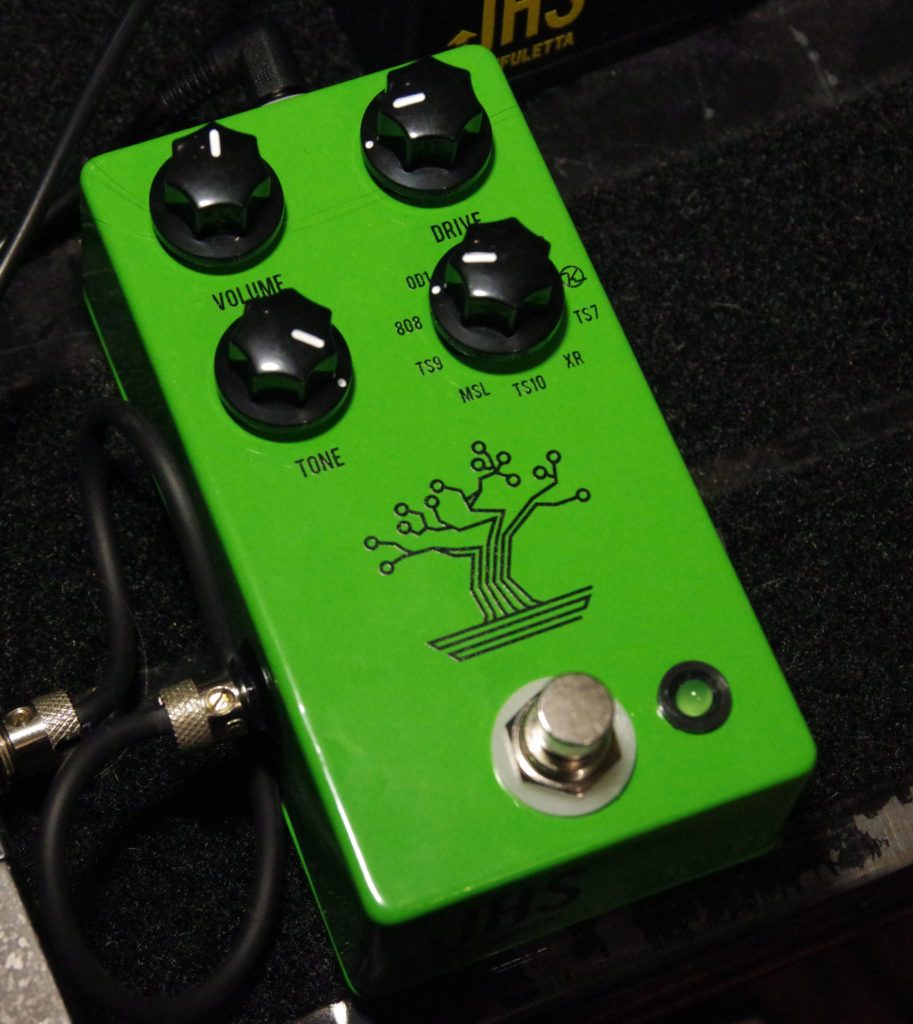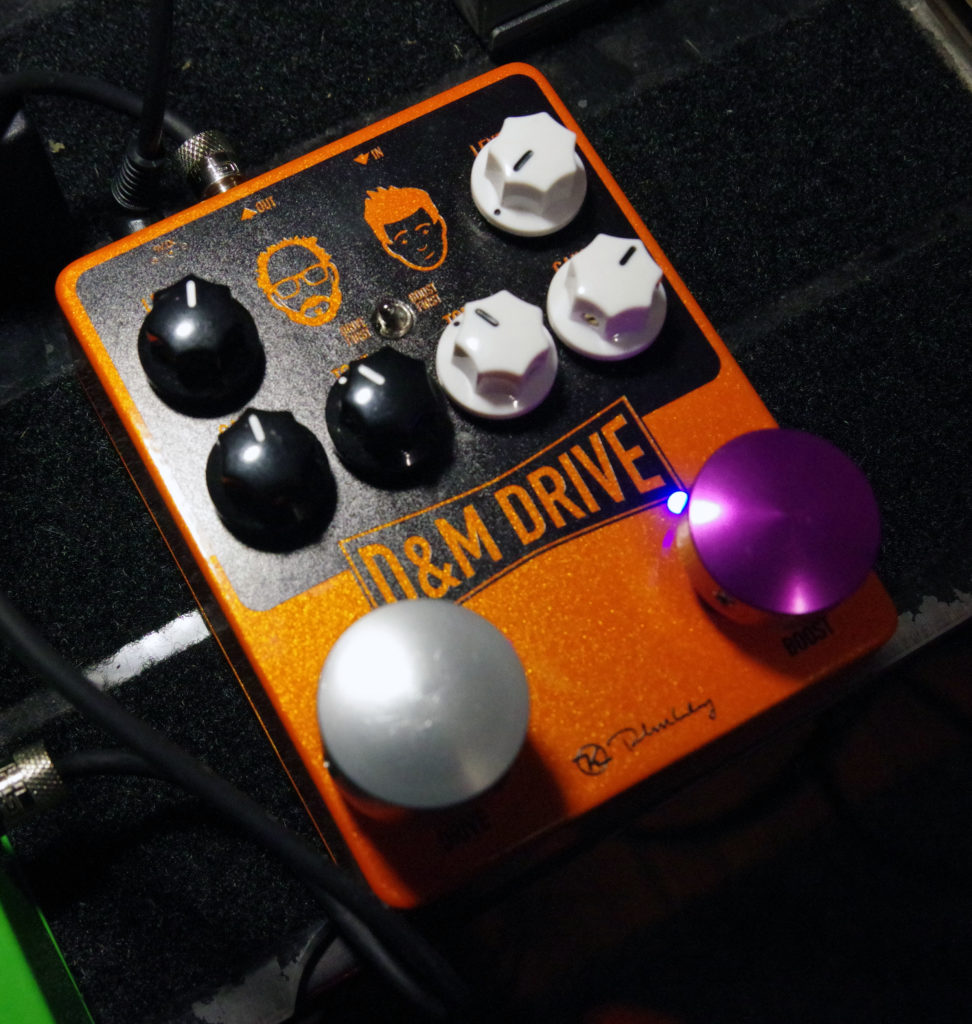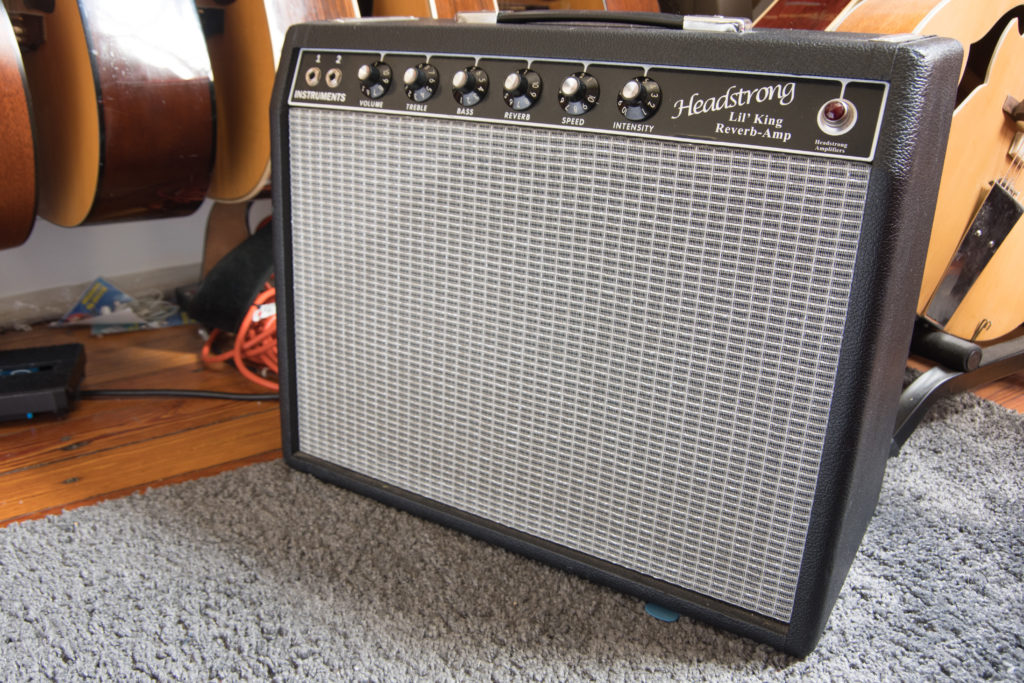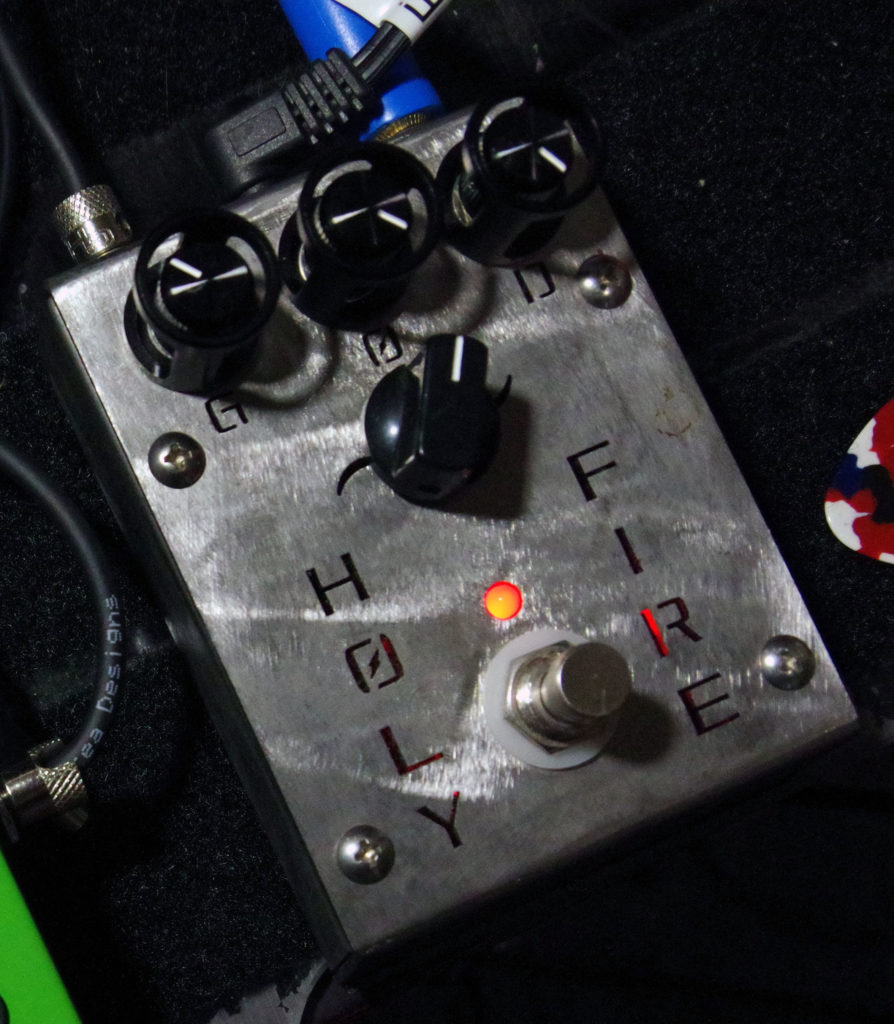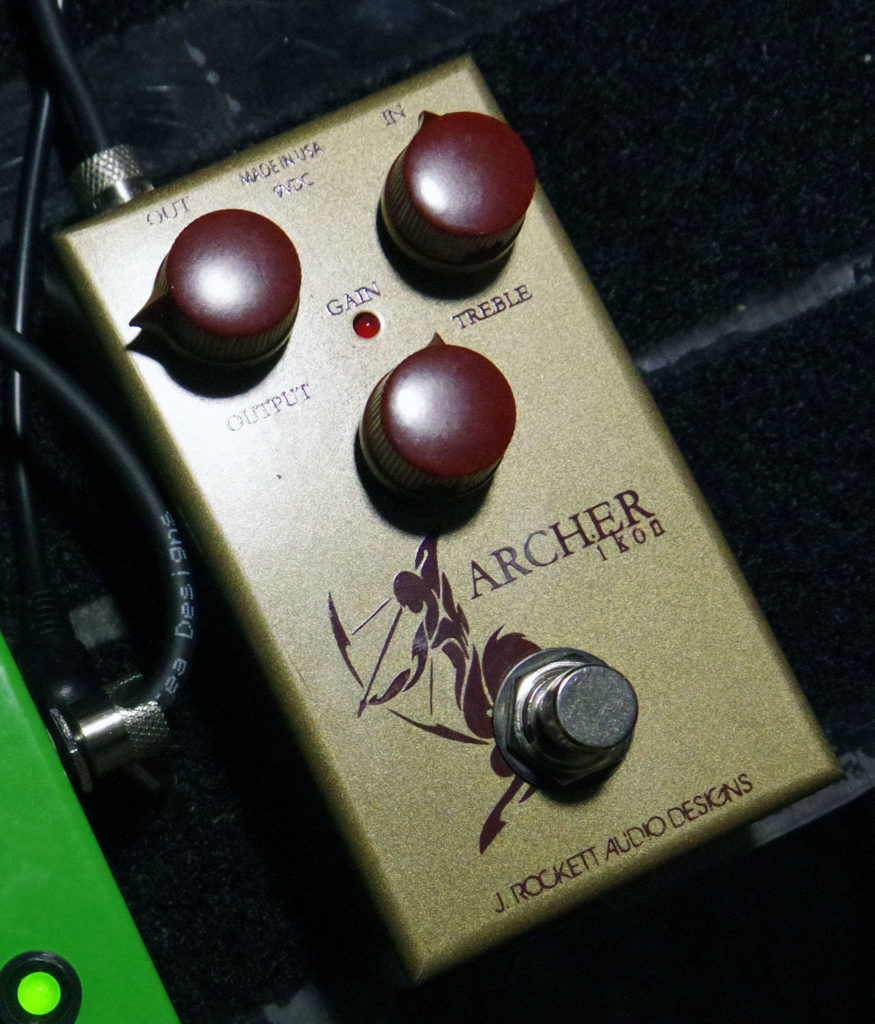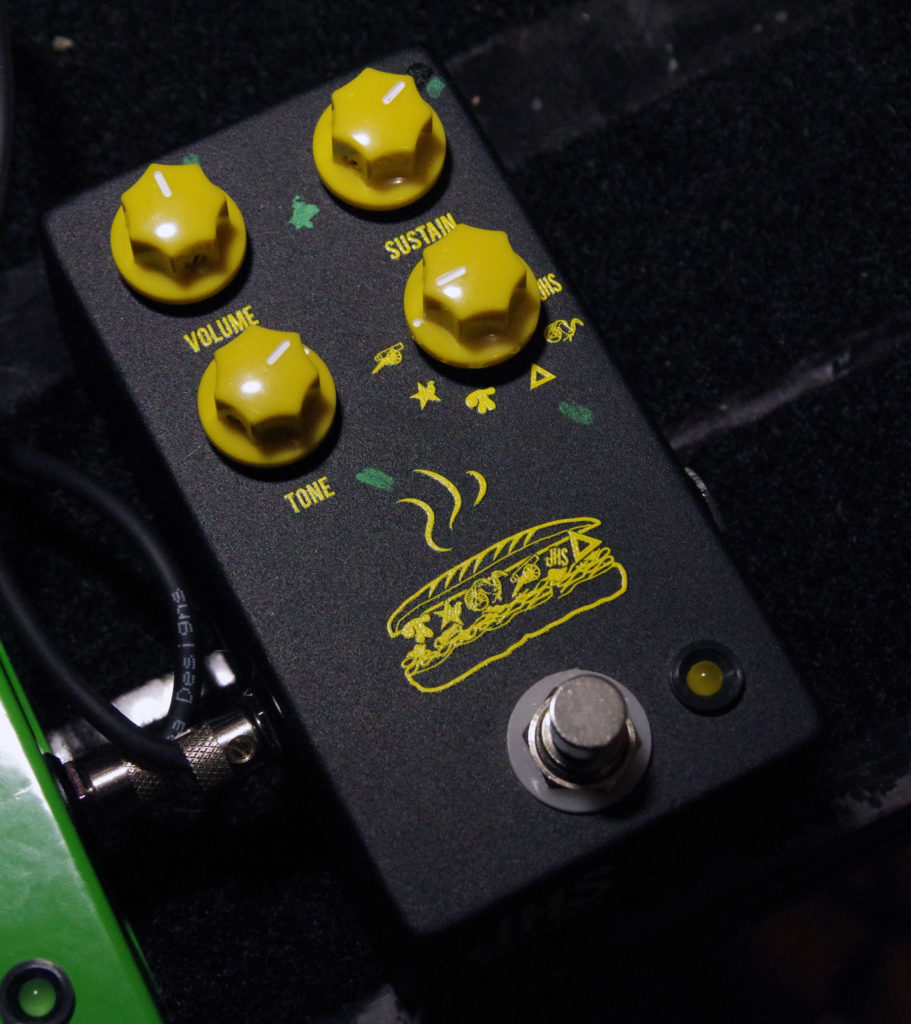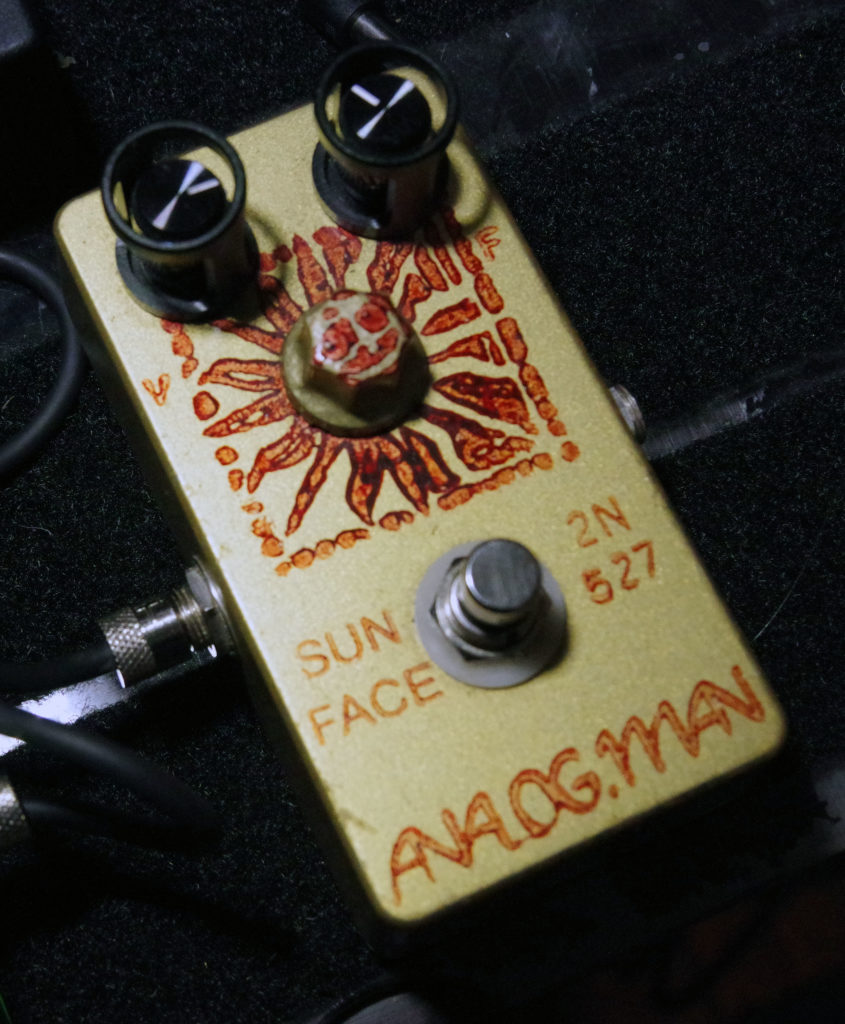Studio Techniques: Getting That “Tube Screamer” Sound
Mark Marshall’s new course, Producing and Recording Electric Guitar is out now.
The words “Tube Screamer” have become synonymous with overdrive. Ibanez first coined the name in 1978 when it released the first Tube Screamer 808 pedal.
Boss had already released the OD1 a few months prior, which was arguably the first Tube Screamer-style circuit.
While they didn’t have the sexy name, the underlying concept was pretty much the same. This era in the late ‘70s saw something of revolution in the pedal world. Not just the Boss OD1 and Ibanez Tube Screamer, but the DOD Overdrive Preamp/250, MXR Distortion+, and the Pro Co Rat all came out at this time. There was a musical shift happening, fueled by some fun little gain boxes on the floor whose imprint is alive and well in modern music.
We could go a lot deeper into the technical history of the Tube Screamer, but sites like Analog Man have already done so. So today, I would rather explore the tone of this iconic stompbox—and its many revisions—as well as its multiple uses, both in the studio and on the stage.
For the purposes of this article and the audio examples within it, I’m going to use JHS’s Bonsai pedal to walk us through the tonal history of the iconic TS circuit.
JHS has very cleverly figured out how to squeeze the entire TS family tree into one pedal. This is possible partly because the TS’s circuit variations share a lot of the same parts. JHS found a way to switch in the varying parts of the circuit when needed. They nailed it. This pedal sounds excellent, and its design is like a lesson in the history of great overdrive tones.
Boost
It’s interesting to note that, traditionally, the overdrive pedal has been used less as a standalone overdrive than as a boost.
Guitarists often use an Ibanez TS9 or 808 Tube Screamer to boost the front end of their amps, whether for solos or for a bass tone. In these applications, they rarely add much gain to the circuit. They’re just juicing the output volume. But cranking the output volume—sometimes all the way—will push a tube amp into breakup sooner, coaxing distortion out of the guitarist’s system.
But this kind of boost doesn’t result only in clean gain, even at the pedal stage. The TS circuit also colors your tone. This “color” has been highly sought out ever since its invention, in 1978.
The TS tone can best be described as cutting some low end, boosting some mids, and lightly compressing your guitar’s signal. It’s a tone that just cuts through the mix better, whether you’re onstage or in the studio. Coupled with a volume boost that further saturates a tube amp, it’s a great marriage. Before this, the only boosts available relied on hard clipping, such as the Electro Harmonix LPB-1, the Dallas Arbiter Rangemaster, and the Colorsound Power Boost.
Flavors of Boost
Through the variations of the TS circuit over time, the amount of compression, output, and the unique “EQ Identity” of each model changed.
For instance, you’ll find the later TS9 compresses a little more than the 808. Meanwhile, the JHS mod offers more headroom and less compression than the 808 or the TS9. The less expensive TS7 is similar to the TS9, with less robust build quality, but many players claim they can hear subtle differences that do matter.
If you really want to use your Tube screamer as a clean boost like so many great players have done in the past, the MSL “Metal Screamer” wouldn’t be your first tonal choice. This is not because it sounds bad—just because it has noticeably more gain. When you want more gain however, the MSL tone could be ideal.
Improving Your Clean Tone
Believe it or not, some guitarists use a TS circuit simply to color their clean tone. Similar to using an 808 or a TS9 as a boost, this application doesn’t add a lot of gain. Clean tone users will add only 1-2 dB of additional output. They’re basically using the pedal as an attractively colored preamp.
There is a great advantage to using the pedal this way. It can take a very wide-open and dynamically wild, clean tone and add focus and control to it. Although it may seem like a great idea to play through a “perfectly” clean amp, the wide dynamics and EQ range can make it a little unwieldy in the context of an actual mix.
Using an original TS808, TS9, Keeley Mod, or JHS Mod version can wrangle your signal into shape. By attenuating the ice-pick highs, shaving off some of the loose low-end, and lightly compressing your signal, it can help sit your clean tone down in one place and keep it from acting like a seven-year-old at the end of Halloween. (Give me some suuuugar!!!)
Remember, when using a tube screamer as a preamp, we’re not seeking overdrive so much as focusing the tone. This kind of use belongs in the “leave it on all night” category.
This is often how I deal with higher-wattage Blackface Fender amps in my own playing. The classic Twin Reverb, for example, is a really loud amp with tons of headroom. A guitar plugged straight into one can sound a little wild and uncontrolled. These amps also tend to be a little midrange-scooped in their sound by nature. The JHS Bonsai version of the tube screamer circuit allows me to tighten it up and control the massive amount of headroom in what is a wild amp. In a sense, I’m using it as a light compressor as much as a color box.
That Glue
Many guitarists love the inherent compression in a TS circuit. In fact, a lot of guitarists like compression more than they’d admit—or even realize.
As an amp—especially a tube amp—is pushed into overdrive, it naturally compresses, but in a soft manner. But one thing that separates the TS circuit from, say, an MXR Distortion+ or a Colorsound Power Boost is that the TS uses soft clipping in the gain stage of the circuit.
Like the MXR and Colorsound, the classic DOD and Rat pedals all use hard clipping. Hard clipping is more aggressive. Think of a square wave: there is a hard cut-off as the signal clips.
Soft clipping is more rounded at the top of the waveform. It’s a less aggressive tone. The signal isn’t clipped (distorted) as much, and the dynamic range compression is more subtle, allowing the amp’s natural distortion to still respond to some of the changes in the player’s intensity.
Soft clipping is a little more like a puffy pillow to rest your guitar on when you’re entering the stratosphere of tone. Hard clipping is brash. Think of a fuzz pedal as blunt and straight to the point. Just like when you’re trying to haggle with an umbrella vendor in the pouring rain on West 46th Street.
Soft clipping is friendly. It asks how you’re feeling today and whether you’d like a massage during your solo.
Yes, This Overdrive Pedal Can Overdrive Too
So far I’ve made it sound like nobody uses a TS circuit for overdrive. Well, that’s not true. I just wanted to get the less obvious stuff out of the way first.
You can hear a TS in overdrive mode all over the place on ‘80s music. Although the idea behind the TS was to create a tube-like overdrive, it doesn’t sound exactly like your amp cranked. (Spoiler alert: nothing does.)
But that’s a good thing, because TS overdrive really became a unique sound all its own.
It’s very common to use a TS as a cascading gain pedal. Meaning, if you already have your amp cooking (overdriving), using a tube screamer to double the gain can create jaw-dropping tone.
(Ok, so maybe nobody is going to drop their jaw nowadays. But they may briefly look up from their iPhones to gander at where the glorious tone is coming from on your side of the stage.)
You can even pair the tube screamer with other drive pedals. Placing it before and after will yield different results.
This is where all the options in the JHS Bonsai version come in handy. Being able to choose between the various models of tube screamer gives you even more flexibility to find a great pairing.
How Would You Like Your EQ?
I mentioned earlier how each model of tube screamer (and therefore, each preset in the JHS Bonsai) has a different EQ ID. Although we can EQ later, I think it’s important to find the TS preset whose EQ ID aligns with what you’re seeking. When it comes to getting great guitar sounds, it’s always better to get EQ right earlier in the process rather than later.
You’ll hear that some versions of the TS are more midrange-centric than others. Or, perhaps the exact area of midrange being boosted is different.
There is definitely a different character to each preset in the Bonsai. I always scroll through to find the best relationship between The Bonsai and the amp.
The “rawest” preset is based on the Boss OD1 which, as mentioned, was the first TS-style circuit on a technical level. The OD1 didn’t have any options for EQ. It was a simple two-knob pedal with output and gain that imparts a very particular color.
The TS7 has the most gain, and more low end. The TS10 has less low-end and less gain. JHS says the MXL preset has more gain and a nice “gooey” feel. But enough words. Let’s hear some samples of the Tube Screamer circuit and how it has changed over time.
Example 1:
We’ll start by playing through each of the presets on The Bonsai, giving us a virtual audio tour through the history of the TS circuit. The very first bit is bypassed so you can hear my clean sound. Then I move from left (OD1) to right (JHS mod).
Example 2:
In this example, I’m using the 808 preset as a preamp for a clean Headstrong Lil’ King Reverb (blackface Princeton circuit). You can hear an increase in volume that pushes the front end a little. But not as much as you would use for a solo boost.
Example 3:
Speaking of boost, here I’m using The Bonsai to boost (not so gently) the front end of a medium-driven Zvex Nano Head into a closed-back 4×12 cab with Greenback 25s.
All of these samples were cut using a Stratocaster.
Example 4:
Here, I’m using The Bonsai as a simple boost but switching through the different TS circuit presets.
Example 5:
Here, I’m cranking the Zvex Nano pretty hard, then boosting it with The Bonsai.
Example 6a:
What does boosting the front end of a Vox sound like? Here’s an AC15 played clean:
Example 6b:
Now with The Bonsai 808, adding some gain:
Example 7:
Same thing but this time with no gain added from The Bonsai—just output volume.
Example 8:
Stacking pedals can be a lot of fun, giving you an even broader pallet of tones. Let’s listen to The Bonsai in TS9 mode, stacked with the Keeley D&M Drive. (The latter is on the drive channel, no boost).
Example 9:
Now we’ll stack the Creation Audio Labs Holy Fire with the XR preset of The Bonsai.
Example 10:
What about stacking with fuzz pedals? I often like to put a TS-style pedal after a fuzz to make the fuzz less harsh. Here is The Bonsai paired with the JHS Muffuletta (Big Muff):
Example 11:
And here, paired with the Analog Man Sun Face (a germanium Fuzz Face circuit).
In these situations, I almost always place the TS-style pedal after my fuzz pedals—especially when I use germanium fuzz circuits.
Example 12:
Would this be a guitar pedal article if I didn’t mention the Klon? Don’t worry—I won’t let you down.
Here is the Archer Ikon paired with The Bonsai in TS9 mode. The midrange is having an orgy. I would knock before entering. Some things you can’t unsee.
Example 13:
Still using the Ikon and The Bonsai, but this time in 808 mode.
Example 14:
I recently recorded a song that had several layers of guitar. This can get sonically cluttered if you’re using the same guitar/amp/pedal combination all the time. Each guitar part in the song used a different style gain pedal—treble booster, fuzz, and The Bonsai.
You can hear the Strat through the UAD Marshall Plexi Super Lead.
By now, you should have a pretty good idea of just what a Tube Screamer, in all its variations, can do. I hope this helps you decide which TS circuit is best for your application. Every studio should have at least one TS in its gear library—its applications are that broad. Or you could just buy The Bonsai and cover all the bases! That’s what I did, anyway.
Mark Marshall is a producer, songwriter, session musician and instructor based in NYC. His new course, Producing and Recording Electric Guitar is out now.
Please note: When you buy products through links on this page, we may earn an affiliate commission.







